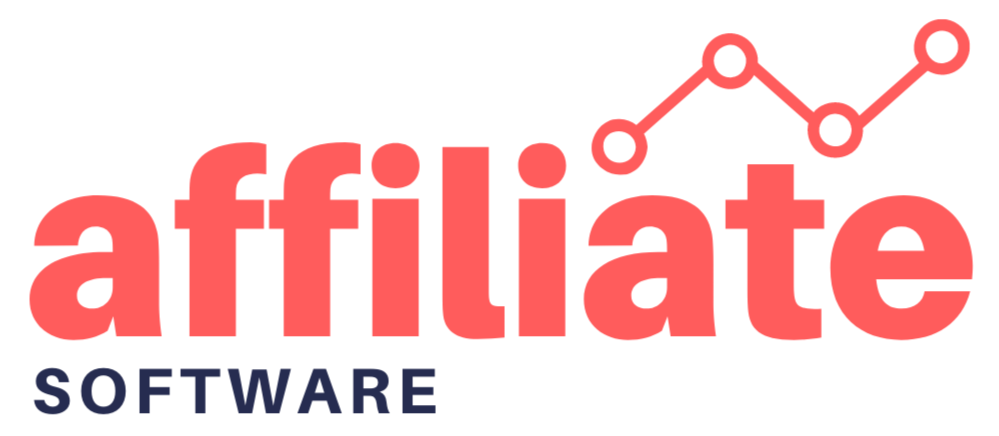Discover the ins and outs of sub-affiliate networks as I spill the beans on this lucrative marketing strategy. Get ready to boost your earnings and expand your reach!
What is a Sub-Affiliate Network? Everything You Need to …
As a digital marketing expert, I’ve always been drawn to sub-affiliate networks. They offer a fascinating look into affiliate marketing’s future, where commissions flow through tiers like a choreographed dance. But what is a sub-affiliate network, and how can it change our approach to partner programs and revenue sharing? Let’s explore the hidden benefits that could transform your business.
Did you know that 81% of advertisers use affiliate networks in their marketing strategies? The sub-affiliate network model takes this to the next level, allowing affiliates to recruit and manage their own sub-affiliates. This approach broadens your reach and leverages the trust of your partners’ networks through influencer marketing. But there’s more to it.
At Affiliate Software Online, we’ve seen the incredible potential of sub-affiliate networks. With 3600+ happy customers and a track record of lifetime technical support and updates, we’ve refined our expertise to help brands and affiliates unlock this strategy’s full potential. Whether you’re an expert or a newcomer, the insights we’re about to share will equip you to navigate the sub-affiliate landscape successfully.
Understanding Sub-Affiliate Networks
Sub-affiliate networks have become a key player in affiliate marketing. They act as a bridge between advertisers and a network of affiliates or publishers. This setup simplifies the promotion of brand offers and encourages performance-based partnerships. Advertisers benefit from not having to work directly with individual affiliates, gaining access to a wide range of marketing partners through these networks.
These networks operate on a tiered commission structure. The network takes a cut of the affiliate’s earnings as a fee. This model benefits advertisers by reaching a wider audience and affiliates by offering various advertising opportunities in one place. Sub-affiliate networks streamline affiliate marketing, making it more efficient and scalable for both brands and their partners.
Affiliate marketing spending in the U.S. has surged 300% in the last decade, hitting $8.2 billion. Sub-affiliate networks are integral to this growth, enabling performance-based partnerships. These partnerships are vital for the long-term success and expansion of businesses in sectors like e-commerce, technology, finance, and travel.
The Role of Sub-Affiliate Networks
Sub-affiliate networks are crucial in the affiliate marketing world. They connect brands with a broad spectrum of content partners. These networks serve as the affiliate of record within a brand’s affiliate program. They manage link building, communication, reporting, and payments for sub-affiliates on their platform.
This approach makes it easier for brands to reach a vast array of content creators, influencers, and promotional partners. It’s essential for their marketing efforts. Sub-affiliate networks also ease the burden for affiliates. They handle the intricacies of joining various affiliate programs, applying for brand partnerships, and managing relationships with merchants.
- Sub-affiliate networks help brands expand their affiliate programs by connecting them with a wide range of content partners.
- They streamline affiliate program management tasks like link building, communication, reporting, and payments.
- For affiliates, sub-affiliate networks make it simpler to monetize their content and manage relationships with multiple brands.
Sub-affiliate networks act as intermediaries, playing a key role in building successful brand partnerships and driving multi-tier marketing strategies. This centralized method benefits both brands and affiliates. It leads to more efficient and cost-effective management of affiliate programs.
Benefits of Partnering with Sub-Affiliate Networks
Collaborating with sub-affiliate networks can revolutionize the affiliate marketing landscape for both brands and affiliates. Brands can scale their affiliate programs effortlessly, reaching a broader audience of content creators. These networks manage the intricate aspects of affiliate relationships, allowing brands to concentrate on creating engaging offers and boosting traffic, sales, and revenue.
For affiliates, sub-affiliate networks offer a streamlined way to monetize their content. They provide access to a vast network of advertisers and exclusive deals, enhancing earning potential without the hassle of managing affiliate programs. The support, tracking, and reporting tools available empower affiliates to refine their promotional strategies, leading to greater success.
One of the key advantages of working with sub-affiliate networks is the potential for scalable partnerships. These networks connect me with a large number of content creators, enabling rapid expansion and tapping into new audiences. This can significantly boost my brand’s visibility and drive substantial results.
Whether I’m a brand looking to enhance my affiliate marketing or an affiliate wanting to simplify monetization, sub-affiliate networks are a valuable ally. They offer the expertise and tools necessary to foster affiliate program growth and monetize content effectively.
Sub-Affiliate Network Integration
Integrating sub-affiliate networks into a brand’s affiliate program demands meticulous planning and clear communication. Brands must outline their expectations regarding affiliate partners and quality standards. It’s vital to ensure transparency from the sub-affiliate network, showcasing affiliates’ traffic and their promotional strategies. [brand compliance]
Adherence to compliance is paramount, ensuring affiliates on the network meet the brand’s terms and conditions. This includes restrictions on promotional tactics and paid advertising. To further support this, partnering with an affiliate network integration agency can be beneficial. They can assist in managing the sub-affiliate network and enhancing program management.
| Feature | Benefit |
|---|---|
| Multi-Level Affiliates module | Enables existing affiliates to invite new users, earning a percentage of extra commission for sales by sub-affiliates. |
| Customizable Multi-Level Affiliate Tiers | Offers an unlimited number of tiers with set commission percentages for each tier. |
| Multi-Level Affiliate Dashboard | Allows parent affiliates to view sub-affiliate coupons, full network tree, orders referred by sub-affiliates, manage payouts, and invite others to join their network. |
By integrating a sub-affiliate network, brands can significantly enhance efficiency and accuracy. This approach reduces manual labor costs and improves data precision. The benefits of such integration far outweigh the costs, making it a strategic move for brands aiming to optimize their affiliate programs and achieve superior results.
Advantages and Drawbacks of Sub-Affiliate Networks
Partnering with sub-affiliate networks can bring significant benefits to brands. These networks offer broad reach, streamlined management, and new partnership opportunities. They connect brands with a diverse pool of affiliates efficiently.
According to Kinsta, 54% of brand marketing professionals rank affiliate marketing highly for customer acquisition. Moreover, 20% place it at the top. Forbes highlights that “83% of marketers use affiliate marketing to boost brand recognition.”
Sub-affiliate networks have become more popular for their role in fast, efficient recruitment for affiliate campaigns. They provide brands with access to a wide range of content partners without the need for direct communication. This saves time and can help brands secure top positions on search engine results pages (SERPs) by leveraging SEO across various sites.
Yet, there are concerns, such as margin compression due to the additional layer in the affiliate payout. Ensuring consistent traffic quality and transparency in traffic source determination can be challenging. Sub-affiliate networks allow content creators to monetize their efforts efficiently, but this can lead to a loss of control over exclusive vouchers.
Brands must weigh the pros and cons before engaging with sub-affiliate networks. It’s crucial to partner with reputable networks that address these concerns. Experienced account managers can help mitigate most drawbacks, highlighting the value of outsourcing affiliate campaign management to skilled teams.
| Advantages | Drawbacks |
|---|---|
|
|
The affiliate marketing market is expected to grow at a 7.7% annual rate from 2023 to 2030. This growth underscores the need for brands to navigate the sub-affiliate network landscape wisely. Partnering with reputable providers is key to addressing potential drawbacks.
Best Practices for Brands Working with Sub-Affiliate
Partnering with sub-affiliate networks can be a strategic move for brands looking to broaden their reach and boost sales. Yet, for a fruitful collaboration, it’s vital to adhere to best practices that emphasize transparency, compliance, and performance monitoring.
Start by setting clear expectations with your sub-affiliate network. Outline the affiliate types you’re open to collaborating with, establish quality benchmarks, and specify the KPIs that will gauge partnership success. It’s crucial to keep a close eye on affiliates promoting your brand to spot top performers and address any issues promptly.
Ensuring brand compliance is paramount. Collaborate with your sub-affiliate network to strictly enforce your brand’s guidelines and FTC regulations. This safeguards your brand’s reputation and prevents fraudulent practices such as click-jacking or fake traffic generation.
Implementing strong fraud prevention strategies is essential when working with sub-affiliate networks. Use advanced tracking and monitoring tools to detect and block any suspicious activities. This approach ensures the integrity of your affiliate program, reduces financial risks, and preserves customer trust.
Lastly, consider partnering with an affiliate marketing agency to navigate the complexities of sub-affiliate networks. These agencies offer invaluable insights on program optimization, affiliate recruitment, and performance tracking. Their expertise can significantly enhance the benefits of your sub-affiliate network partnership.
By adopting these best practices, brands can fully leverage sub-affiliate networks. This approach expands their market reach, increases sales, and sustains a robust, compliant, and fraud-free affiliate program.
Popular Sub-Affiliate Networks
The affiliate marketing landscape is constantly evolving, bringing forth several sub-affiliate networks as reliable partners for brands and affiliates alike. Among these, Acceleration Partners, ClickBank, Partnerize, and Rakuten stand out as leaders in the industry.
Acceleration Partners is a top-tier agency in partnership marketing, offering a broad spectrum of affiliate programs across various sectors. They are distinguished by their thorough program management and data analysis capabilities. Their commission rates span from $1 CPL to $150 for each qualified sale.
ClickBank, a pioneer in the digital marketplace, gives affiliates access to a vast selection of products and attractive commission rates. It processes over $6.2 billion in commissions yearly, covering a wide range of categories including health and beauty, self-help, e-businesses, home and gardening, and sports.
Formerly known as Performance Horizons, Partnerize is a leading entity in partner marketing technology and services. It operates with a straightforward commission structure, paying affiliates based on sales. This approach caters to significant sectors such as retail, travel, finance, D2C, subscriptions, and entertainment.
These sub-affiliate networks have carved a niche for themselves as dependable partners for both brands and affiliates. They are celebrated for their commitment to quality, adherence to compliance, and robust performance. By offering centralized link building, communication, reporting, and payment solutions, they streamline the affiliate marketing process. This facilitates brands in expanding and scaling their affiliate programs efficiently.
Conclusion
Reflecting on our exploration of sub-affiliate networks, I am filled with anticipation for the future. These platforms have become crucial in the affiliate marketing sphere. They connect innovative brands with a broad spectrum of content creators, influencers, and website owners.
Through sub-affiliate networks, brands can tap into substantial growth. They gain access to a broader audience, simplified program oversight, and innovative ways to boost traffic, sales, and revenue. Affiliates also reap significant rewards, including easier content monetization, advanced analytics, and exclusive deals that enhance their earnings and influence.
For brands to fully benefit from sub-affiliate networks, they must focus on clear communication, quality, compliance, and transparency. By doing so, they create an environment where sub-affiliates are motivated, supported, and empowered to aid the brand’s growth. This approach paves the way for robust growth and success in the ever-evolving affiliate marketing realm.


Leave a Comment